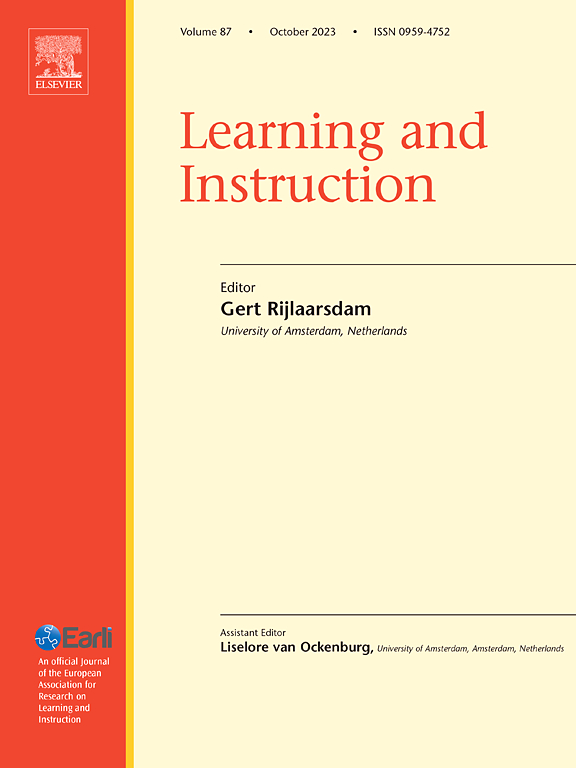Decoding the success of collaboration in computational thinking
IF 4.9
1区 教育学
Q1 EDUCATION & EDUCATIONAL RESEARCH
引用次数: 0
Abstract
Background
Computational Thinking (CT) is a key component of information literacy and future employment skills. While pair programming (PP) has been recognized as an effective collaborative strategy for CT education, the motivational mechanism behind remains underexplored.
Aims
We aim to examine how self-efficacy, engagement, and collaboration preference influence CT skills and learning satisfaction. Further, we compare the relationships among these motivational factors between PP and individual learning contexts.
Sample
Participants were 79 fifth-grade elementary school students. Forty of participants were randomly paired and assigned to the PP group and 39 were assigned to the individual learning group.
Methods
We implemented a four-week intervention. Students in the PP group collaborated on CT tasks, while students in the individual learning group completed the tasks individually.
Results
Experiment results demonstrated that PP significantly improved students' self-efficacy compared to individual learning. In both groups, students with high self-efficacy beliefs were more engaged in CT learning, consequently leading to better performance in CT tests and higher learning satisfaction. Notably, the positive effects of self-efficacy and collaboration preference on cognitive engagement were stronger in the PP group. Moreover, positive PP experiences reinforced students’ preference for future collaborative learning.
Conclusions
These insights contribute to motivation research in CT education and provide practical implications for designing more engaging and effective PP activities in developing CT skills.
破解计算思维中协作的成功
计算思维(CT)是信息素养和未来就业技能的关键组成部分。虽然结对编程(PP)已被认为是CT教育中一种有效的合作策略,但其背后的动机机制仍未得到充分探讨。目的研究自我效能感、敬业度和协作偏好对CT技能和学习满意度的影响。进一步,我们比较了这些动机因素在PP和个体学习情境之间的关系。样本参与者为79名小学五年级学生。40名参与者被随机配对并分配到PP组,39名被分配到个人学习组。方法进行为期四周的干预。PP组的学生合作完成CT任务,而个人学习组的学生单独完成任务。结果实验结果表明,与个体学习相比,PP显著提高了学生的自我效能感。在两组中,具有高自我效能感信念的学生对CT学习的投入程度更高,因此在CT测试中表现更好,学习满意度也更高。值得注意的是,自我效能感和合作偏好对认知投入的正向影响在PP组中更强。此外,积极的PP体验强化了学生对未来合作学习的偏好。结论这些见解有助于CT教育的动机研究,并为设计更有吸引力和更有效的PP活动来培养CT技能提供了实践意义。
本文章由计算机程序翻译,如有差异,请以英文原文为准。
求助全文
约1分钟内获得全文
求助全文
来源期刊

Learning and Instruction
Multiple-
CiteScore
11.30
自引率
4.80%
发文量
109
期刊介绍:
As an international, multi-disciplinary, peer-refereed journal, Learning and Instruction provides a platform for the publication of the most advanced scientific research in the areas of learning, development, instruction and teaching. The journal welcomes original empirical investigations. The papers may represent a variety of theoretical perspectives and different methodological approaches. They may refer to any age level, from infants to adults and to a diversity of learning and instructional settings, from laboratory experiments to field studies. The major criteria in the review and the selection process concern the significance of the contribution to the area of learning and instruction, and the rigor of the study.
 求助内容:
求助内容: 应助结果提醒方式:
应助结果提醒方式:


